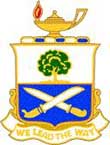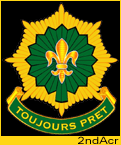Sheytan
Posts: 863
Joined: 11/28/2006
Status: offline

|
The discussion of rates of fire, and fire "weight" is interesting. It dosnt address the dynamics of a engagement. Many factors contributed to the end result. NOTE IN THIS AAR THE IMPACT OF RADAR, which has been much critisized in AE as giving the Allied player too much of a advantage. What EA and WITP actually FAILS to model is this effectiveness, less so in AE, which frankly I think could be solved by giving a qualifier to the year of employment, or a skill check, vs vie crew skill.
FURTHER AE AND WITP FAILS to model the sheer rate of fire a BB possessed, it expends it main gun battery too casually and frankly is much too shallow in WITP AND AE to model these capital ships. "except in the famed and amusing NUCLEAR bombardments notable for WITP".
This AAR illistrates NOT only the CC confusion of the application of radar but its utter distruction when employed ideally.
Battleship Night Action
Naval Battle of Guadalcanal
November 1942
In this decisive action WASHINGTON and SOUTH DAKOTA engaged a Japanese force termed around the battleship KIRISHIMA. SOUTH DAKOTA suffered extensive topside damage, but WASHINGTON's accurate fire mortally injured KIRISHIMA. Set aflame and racked by explosions, KIRISHIMA was scuttled by her crew. The last major Japanese naval thrust at Guadalcanal had been turned back, and WASHINGTON had done what she had been designed to do -- sink one of her own kind in a gunnery action. WASHINGTON was the only American fast battleship to defeat another capital ship.
--------------------------------------------------------------------------------
VIEW MAP OF BATTLE
--------------------------------------------------------------------------------
WASHINGTON ACTION REPORT
SUMMARY OF OUTSTANDING EVENTS AND GENERAL COMMENT
On the night of November 14-15 WASHINGTON was flagship of Commander Task Force 64 (ComBatDiv 6). In column, with four destroyers ahead and SOUTH DAKOTA astern, she stood north between Russell and Guadalcanal, then east and southeast, passing north of Savo. Standing west from this point, first radar contact was made at 0001 with enemy ships east of Savo. From 0016 to 0019 fired 42 rounds 16", opening at 18,500 yards, at large cruiser or battleship which it is believed was sunk. From 0016 to 0017 fired 100 rounds 5" at ranges 12 to 13,000 yards at enemy cruiser or large destroyer which was also engaged by SOUTH DAKOTA and was left burning. Standing on north-westerly courses fired 133 rounds 5" from 0025 to 0034 at ranges about 10,000 yards at light craft close to south-east shore of Savo which were engaging our destroyers; all were silenced and one was left burning. From 0100 to 0107 fired 75 rounds 16'' and 107 rounds 5" at ranges from 8,400 to 12,650 yards, at battleship northwest of Savo which was firing at SOUTH DAKOTA. This battleship was silenced and was subsequently tracked by radar through a 500-degree turn. From 0100 to 0107, fired 120 rounds 5", at ranges from 7,400 to 9,500 yards, in succession at three enemy cruisers illuminating and engaging SOUTH DAKOTA.
By the time our 5" fire on light craft close to southeast shore of Savo had ceased, one of our destroyers was sunk, one was hopelessly afire (she exploded and sank a few minutes later) and the other two were put out of action (they retired southward). Subsequently, and before we opened fire on ships northwest of Savo, the SOUTH DAKOTA was seen to the eastward between this ship and Savo on a course to northward of WASHINGTON course. What appeared to be the SOUTH DAKOTA was seen at about 0121 at a considerable distance to the southeastward between this ship and Guadalcanal on a southerly course.
From radar tracking and visual observation of enemy ships, there were:
(1) Fired upon by this ship and apparently sunk:
•1 large cruiser or BB (WASHINGTON only.)
•2 large cruisers (WASH 5".)
•1 destroyer (our DD's plus WASH 5".)
(2) Fired upon by this ship and apparently damaged:
•1 14" BB silenced and out of control (WASH. only.)
•1 DD burning (WASH. 5".)
•5-9 light craft silenced (our DD's plus WASH. 5" plus S.D.)
•There was no melee. This ship was undamaged.
--------------------------------------------------------------------------------
COMMENT
The following comments are submitted:
•Our radar is effective for accurate gunfire at long ranges at night. Japanese radar aboard ships present, if any, is not effective for surface targets.
•Japanese are sufficiently familiar with radar and aware of our use of it to make full use of land cover both between them and ourselves and closely backing them up.
•Our optical vision is superior to Japanese.
•Our fire control and the effectiveness of our projectiles meet or exceed our expectations.
Accordingly,
•We should seek rather than avoid night action, opening at ranges as great as satisfactory solutions can be obtained.
--------------------------------------------------------------------------------
EFFECTIVENESS OF GUNNERY
This ship was fired on only sporadically. She was not illuminated. No hits were sustained and the nearest miss noted was the splash, apparently of a major-caliber shell about 200 yards on the port quarter. Observers who witnessed other ships of our force under concentrated fire reported the Japanese gunnery to be accurate. Enemy ships close to Savo fired automatic weapons accurately at our destroyers. The Japanese ships were, apparently, not equipped with radar. Their searchlights provided excellent illumination of SOUTH DAKOTA, but attracted our fire and provided a point of aim.
--------------------------------------------------------------------------------
MAIN BATTERY
This ship's gunnery appeared highly effective. Fire was opened with a gun range of 18,500 yards initially by this vessel using radar ranges and optical train and hits were definitely obtained by the third salvo. It is believed target was stopped and sinking after third salvo rounds were fired.
In the second phase target had been tracked by radar ranges and bearing and later by optical train. Fire was opened at 8,400 yards and a hit was probably obtained on first Salvo and certainly on the second. Fire was rapid, on one turret ready light, for about 2 minutes 39 seconds, firing about 39 rounds. It was interrupted for 1 1/2 minutes due to an erroneous report that target was sunk, and resumed for 2 minutes and 45 seconds, during which time 36 rounds were fired. A total of 75 rounds was fired on this target which was believed to be the KIRISHIMA. Star shell illumination was used on this phase after about the second salvo, 62 rounds being fired.
According to the best data available, overall SPGPM was 1.30 and 5 guns had 1.8 average. Fire discipline was excellent.
The normal fire control set-up of this vessel was used throughout, namely:
•Collective fire, Director I (Forward main-battery director) controlling in train. Group I controlling in Plot.
•Director IV (Stable Vertical I located in plotting room) controlling in continuous level and cross level.
•Director IV controlling firing circuit (Plot.)
•Radar ranges by indicating and voice.
Turret pointers were matched during phases in which the director was being trained on the visual target. During the time when the visual target was obscured, whether training by radar or generated by using previously observed relative motion of firing ship and target, a turret spread in deflection was fired.
The selected train firing key was used in plot to insure that the firing pointer could see the light that indicates when the director train is on target. It has been standard practice for this vessel to use that key at night when visual or radar train indications are accurate, shifting to generated bearing only in case of poor train indication or obscured target.
Against the first main battery target, 18,500 yards, radar range was used in conjunction with visual train. The target became obscured after the second salvo. The target was lost by all radar's after this salvo. As a result the last salvos went out in what amounted to generated. That is, the present range was let ride and the director being in automatic remained on the generated train. On the second main battery target the tracking was done entirely by radar for at least five minutes. When the target finally came into view optically, checks given by the pointer indicated that the radar was exactly on. In this connection it is noted that a considerable period of time is taken to adapt the trainer's eyes to the telescope at either night or day after looking at the radar scope (train indicator.) The reverse is also true. As a result of this difficulty, main battery Director II found it desirable to let the trainer keep track by radar and the pointer observe by telescope. Such a system is made possible by the fact that the director is trained automatically by generated bearing. Therefore small corrections only are necessary and such corrections can be made by coaching from a pointer's station.
Radar spots were used against the first target while the target echo was present. It is of interest to note that against the second target (BB) "overs" as well as "shorts" could be seen optically. Salvos were walked back and forth across the target.
The fire control switchboards on this ship provide for a secondary battery director to furnish target bearing to a main battery range keeper. Thus it can also be used to designate to a main battery director. At the time of first contact both main battery directors lost the target and the shift was made for designation, but the secondary battery director had not yet settled down and its designation was not used. In the meantime main-battery Director I had again picked up the target and target bearing was shifted back to it.
--------------------------------------------------------------------------------
SECONDARY BATTERY
Secondary battery fire control used radar ranges throughout. During Phase 1 radar train was used. In Phases 1A and 2 optical train was used. Level for the basis of gun elevation order was obtained from the Stable Element with dip-range being set on the synchronized elevation knob in accordance with advance range. Firing circuits were controlled by director pointers. Group 1 used rapid continuous fire. On the other hand, Group III soon shifted to Salvo fire, 4 second interval, to facilitate spotting.
In the first phase effectiveness of the Secondary Battery was undetermined. Group I and Group III each controlled two mounts in firing at surface targets at ranges between 13,000 and 15,000 yards. The control of the groups was by radar, range and training. Group III used 400-yard rocking ladder in 200-yard steps. No radar spots were obtained and there was no observation of the fall of shot.
Phase 1A consisted of shooting at what at first appeared to be shore batteries on Savo Island but later identified as surface craft. Initially both groups opened fire on these targets. In view of the fact that Group I appeared to be shooting "over," Mounts 1 and 3 were switched over to Director III which continued the fire. Group III opened fire initially at the target near the right tangent of the island, aiming at the gun flashes, using a 200-yard rocking ladder based on the closest radar range with target speed set on zero. The first target was set on fire, many observers reporting that a stream of 5" tracers poured into the target which immediately burst into flames. A range of 10,200 yards on the burning ship from the main battery coincidence range finder was within 100 yards of the range set on the computer. Fire was shifted successively to the left using gunfire flashes as points of aim, and was continued against gunfire flashes until each gun ceased firing. Apparently another target on bearing near the center of Savo Island was set on fire. These targets may have been destroyers or large MTB's.
In Phase 2 (the third secondary battery phase) the secondary battery again opened with divided fire. Group I fired on main battery target and Group III on target whose searchlights were illuminating SOUTH DAKOTA. Twice during the firing Group I was hitting, apparently starting fires in the upper works. When searchlights on another ship were seen to be turned on, secondary battery Director III used them as a point of aim. On this target, which was apparently a heavy cruiser, also engaged by the SOUTH DAKOTA's 5", Group III fired with a 200-yard rocking ladder. The first salvo landed short and was spotted "up 400." Fires were started. At about the 4th Salvo the searchlights went out. Director III continued with about eight or ten more Salvos, at which time another group of searchlights was seen to come on. The point of aim was shifted to these searchlights and fire continued until they went out. Another set of searchlights came on and fire was again shifted to them. The last searchlights were turned off about the time of cease firing. No hits were definitely observed on the last two targets.
The tactical situation was greatly affected by the presence of islands and the necessity of fighting in comparatively restricted waters. As noted previously the radar screens had many land echoes. For a surface engagement under reduced visibility, and especially in restricted waters, a navigational plot should be maintained in radar plot for fully effective use of the radar. If this vessel were to keep such a plot more space would be required. An expansion of radar plot appears justified.
The picture presented by the SG radar is not a true plan view. Radar operators must be given concentrated training in areas surrounded by land in distinguishing between land and ships. During a previous sweep by this vessel around Russell Island at night, numerous false reports of surface targets were received from the fire control radar's that turned out to be land more than 100,000 yards away. During the night of the engagement only one such report was received.
--------------------------------------------------------------------------------
LESSONS LEARNED AND RECOMMENDATIONS
Radar has forced the Captain or OTIC to base a greater part of his actions in a night engagement on what he is told, rather than what he can see. This ship was not hit but examination of SOUTH DAKOTA revealed completeness with which bridge structure may be riddled by shells and splinters which penetrate 1" ST S bulkheads. The enemy may be counted upon to hit foremast superstructure.
The captain and navigator should be in Conn. An experienced officer, other than the navigator, should be FOOD and should filter for the Captain the tremendously numerous reports received at the conning station over the various telephone circuits.
--------------------------------------------------------------------------------
ComBatIve 6 ACTION REPORT
This action demonstrated the tremendous value of radar in a night action. Battleships obtained excellent fire control results using radar range and radar spots, combined with optical instruments.
Strong signals from enemy ships permitted quick and accurate solution and spots.
First phase opening ranges 16,000 - 18,000 yards, illumination by setting moon. Hit with second Salvo. Second phase opening range 6,000 - 9,000 yards; illumination by star shells, did not add to accuracy of fire.
No indication that enemy used radar. Enemy apparently ranged on gun flashes, but inaccurately. SOUTH DAKOTA hit after enemy searchlight illuminated her.
Own gunfire superior to Japs, particularly as range increased.
SG radar invaluable in locating surface targets and coaching fire control radar's on.
--------------------------------------------------------------------------------
Samuel Eliot Morison,
HISTORY OF UNITED STATES
NAVAL OPERATIONS IN WORLD WAR II, Volume V
The battleship action of November 14-15 was vastly better fought by the United States Navy than the unorganized brawl of two nights earlier. Admiral Lee had a positive doctrine that he maintained, despite the absence of his entire destroyer screen. An able and original scientist as well as a flag officer, he appreciated the value of radar, used it to keep himself informed of enemy movements and tactics, and made quick, accurate analyses from the information on the screens. Yet some mistakes of earlier night battles were repeated. Lee's task force was a scratch team, destroyer and battleships captains alike being unfamiliar with each other and with their commander. Apparently the recurring urgencies in the South Pacific imposed a haphazard composition for every task force thrown together to meet the enemy. Again, and not for the last time, the Japanese taught the American a lesson in the use of torpedoes. SOUTH DAKOTA was lucky to escape alive. WASHINGTON, conned by Captain Glenn Davis and directed by Admiral Lee with a skill and imperturbability worthy of her eponym, saved the day for the United States.
|
 Printable Version
Printable Version




















 New Messages
New Messages No New Messages
No New Messages Hot Topic w/ New Messages
Hot Topic w/ New Messages Hot Topic w/o New Messages
Hot Topic w/o New Messages Locked w/ New Messages
Locked w/ New Messages Locked w/o New Messages
Locked w/o New Messages Post New Thread
Post New Thread